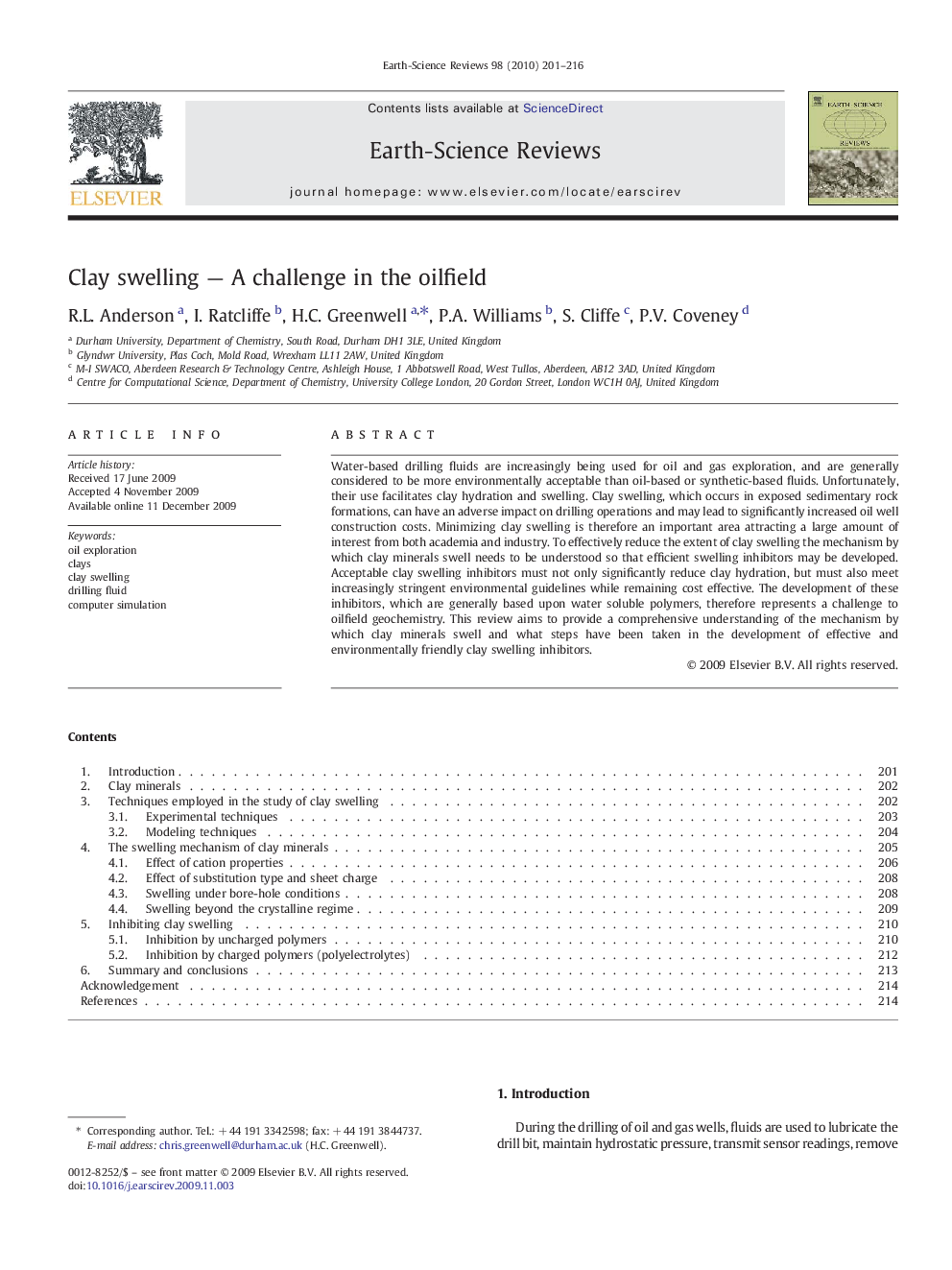| Article ID | Journal | Published Year | Pages | File Type |
|---|---|---|---|---|
| 4726144 | Earth-Science Reviews | 2010 | 16 Pages |
Water-based drilling fluids are increasingly being used for oil and gas exploration, and are generally considered to be more environmentally acceptable than oil-based or synthetic-based fluids. Unfortunately, their use facilitates clay hydration and swelling. Clay swelling, which occurs in exposed sedimentary rock formations, can have an adverse impact on drilling operations and may lead to significantly increased oil well construction costs. Minimizing clay swelling is therefore an important area attracting a large amount of interest from both academia and industry. To effectively reduce the extent of clay swelling the mechanism by which clay minerals swell needs to be understood so that efficient swelling inhibitors may be developed. Acceptable clay swelling inhibitors must not only significantly reduce clay hydration, but must also meet increasingly stringent environmental guidelines while remaining cost effective. The development of these inhibitors, which are generally based upon water soluble polymers, therefore represents a challenge to oilfield geochemistry. This review aims to provide a comprehensive understanding of the mechanism by which clay minerals swell and what steps have been taken in the development of effective and environmentally friendly clay swelling inhibitors.
